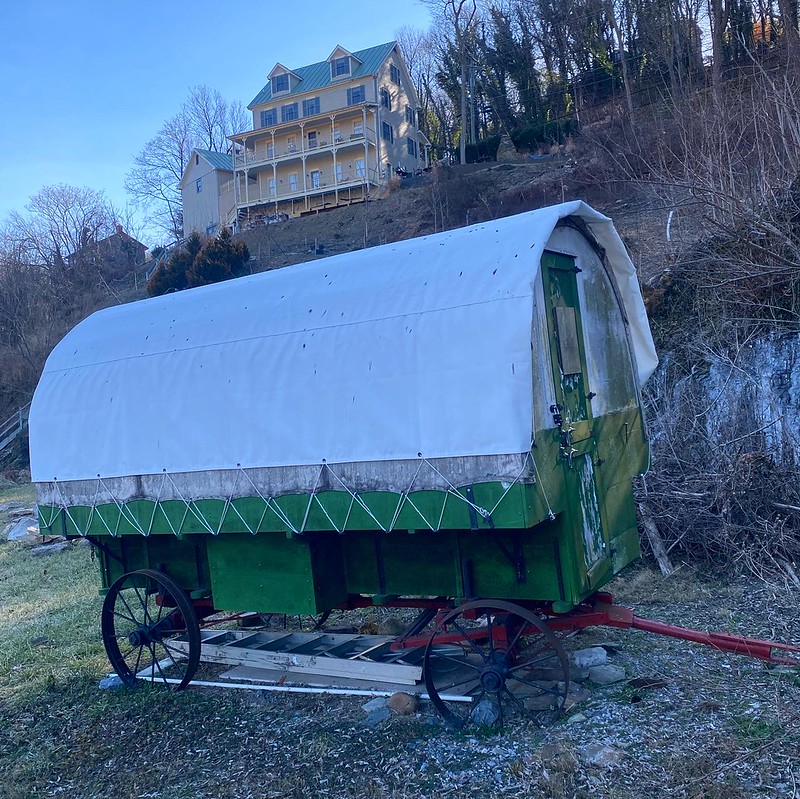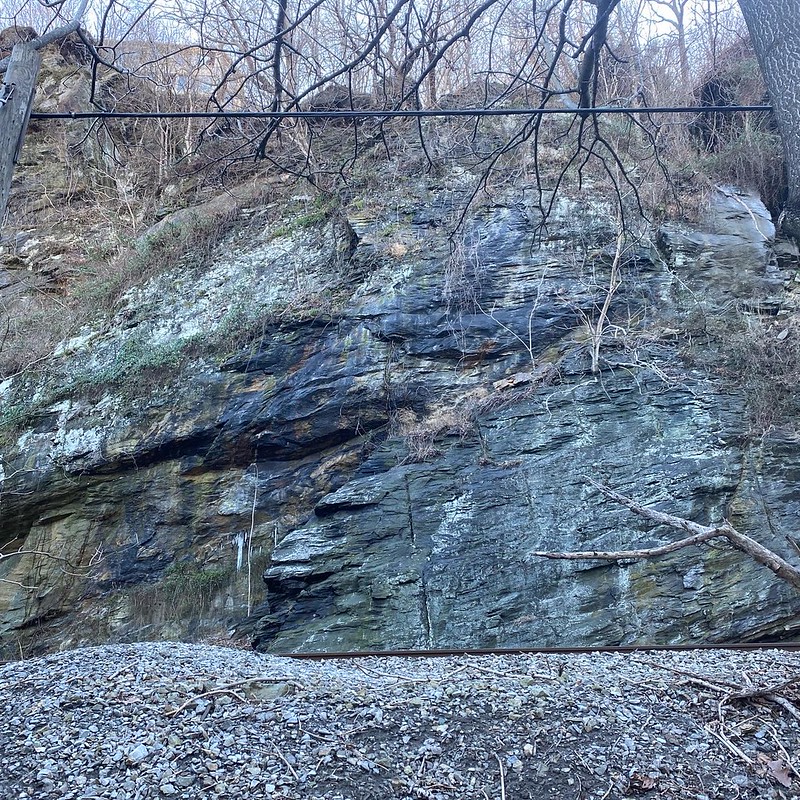It is surprising to think that large swaths of the United States weren't fully mapped out even as little as 200 years ago.
At first a scientific oddity, the geologic map invented by scientific hobbyist William Maclure proved to be essential reading for rugged frontier entrepreneurs of the early 19th century. The geologic map paved the way, literally, for the industrial age.
The story of how Maclure became Father of the Geologic Map shows that even when an initial foray into creating a new technology may not first succeed, the basic ideas can still be carried forward into the world. In Maclure's case, it was a repurposed failed-Utopian community built in part by Maclure himself that ultimately brought his science to the people.
Maclure's map was the first that showed the geologic features of a land mass, the Eastern United States. Using a standard topology map of the day, Maclure color-coded the land to the different types of bedrock formations.
The eastern shores were dominated by tracts of the alluvial rocks: the peat, sand and gravel all fresh from the ocean; while those lands the west side of the Appalachian Mountains has the fossil bearing sediment-heavy sandstone secondary rocks, as he described them in an 1809 paper for the " The Transactions of the American Philosophical Society."
The great chain of Appalachian mountains themselves were made up of the primitive rocks of great granite ridges, as well as transition rocks, as they were known as the time, of limestone and flinty-slate.
Maclure undertook his mapping of the eastern U.S. as a hobby. Having set up an import/export business in his late teens, Maclure was a successful business man by his mid-30s. With the business pretty much self-sufficient, he set himself on various tasks to ward off the "sedate comforts" of middle age.
He got the idea of "rock-hunting" from his hobby of mhiking. He wanting to know more about the mountains he scuttled over. Like many earth observers at the time, he didn't settle for the Biblical truth that the land was all 4,000 years old: Geology was a topic of conversation for everyone: the aristocrat with the collection of rare jewels, and the farmer who has a theory on the cut of his land.
After a trip to Europe, Maclure vowed to investigate America's own geology. "He would find out what America was made of, he decided. And he would draw a map of it," Winchester wrote.

"The Men Who United the States"
Simon Winchester, Harper Perennial
Starting in 1799, Maclure spent the next decade tramping up and down the east coast of the United States, the area between the Appalachians and the Atlantic Ocean. He went on 50 different journeys, crisscrossing over the mountains 22 times, going as far south as Georgia and as far north as Maine. He either walked, or rode across over roads in carriages or farmers' carts.
The resulting map, though groundbreaking, was quickly forgotten, beyond generating a burst of curious interest from the scientific community. Maclure's maps "are undeniably pretty; but as science they were confusing and, in truth, pretty useless," wrote Simon Winchester, in "The Men Who United The States."
Six years later, in 1815, English engineer William Smith dusted off the form, substituting the ages of the rocks in place of type type of rocks. The result, in effect, "demonstrated how a proper stratigraphic map should be made," Winchester wrote.
And that kind of map drew immense interest from the rugged frontier entrepreneurs of the early 19th century.
Illustrating rocks by their ages allowed for "extrapolation and prediction," Winchester wrote."Armed with a Smith map, one could forecast with some certainty where a plunging coal seam might lead, or where iron or copper -- or one day, oil -- could be found deep below the surface."
It was Smith's geologic map that paved the way, literally, for the industrial age. Though its own success came by the way of Maclure in the end.
![]()

A few years after his map project, Maclure had met Robert Owen, a Welsh cotton magnate who had plans to build a Utopian community in the United States. Owen already had helped run such a town near one of his mills in Scotland for the benefit of his employers, New Lanark. He saw New Lanark as a success of social engineering, with its company-provided social and welfare programs, and superior education for the children. He wanted to try replicating this community in the new land. In Winchester's words:
They would govern themselves, farm the land collectively, and intelligently, live congenially without money, commune without money, commune among themselves in the gardens within the buildings, and discipline themselves to hard work and moderate celibacy.
Owen bought an entire town in Indiana, New Harmony, and then toured the country looking for converts. It was then he met Maclure.
Since his adventures in mapmaking, Maclure had become the president of American Academy of Natural Sciences . Maclure was intrigued by the possibilities of helping spread the knowledge of science. He wanted to bring science education to the people, expand it beyond the Patrician class, to the farmer, the miller, and others.
And it was with this agenda that Maclure signed on to Owen's New Harmony, Maclure brought a whole crew of like-minded younger individuals with him, who wanted to teach people wherever they went about science about science, science education and -- Maclure's favorite topic -- geology.
The original incarnation of New Harmony, under Owen's leadership, fell apart as factions bickered over commune rules, with each splinter group vying to be dominant party. His dreams of "universal betterment" crushed, Owen returned to Scotland.
Maclure took over and repurposed the town and its inhabitants for his mission of science education. He quelled the varying factions within the community and quietly excised some of the more Utopian ideals, such as not using money, from the community. The botanists, physicians, and geologists Maclure brought there taught at nearby schools, while writing books and papers about their chosen disciplines.
It was Owens' own son, David Dale Owen, who took up geology. "Maclure had the vision and led the way; Robert Owen's son went the distance and did the work," Winchester wrote.
By this time, Smith's approach to stratified geologic maps had become the standard, not the least because many U.S. states were eager to catalogue their assets of coal, lime, iron and other valuable minerals that could be exploited.
Owen was first commissioned by Tennessee, and his task soon expanded to capture the 11,000 square miles across Iowa, Wisconsin, and Illinois. In Maclure's tradition, the scope of Owen's work was breath-taking. Owen assembled the report within two years, with the help of 139 assistants -- all of them from New Harmony.
It was "a feat of generalship which has never been equaled in American geologic history," according to one account. By the time Owen had died in 1860, 28 states had been surveyed.
